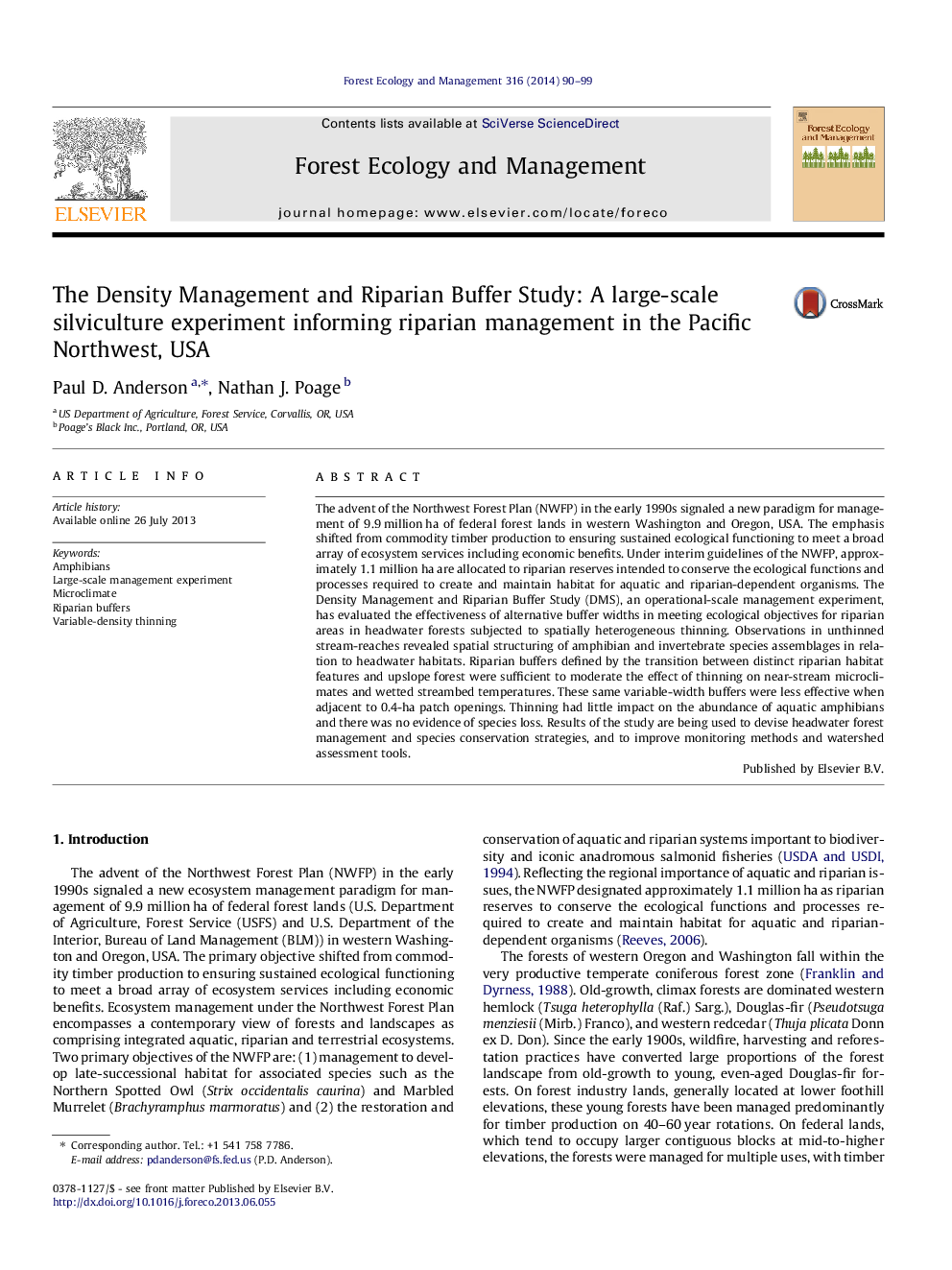| Article ID | Journal | Published Year | Pages | File Type |
|---|---|---|---|---|
| 86921 | Forest Ecology and Management | 2014 | 10 Pages |
•Headwater stream buffer widths are evaluated in a large-scale management experiment.•Diverse headwater ecosystems have physiographic delineation of species assemblages.•Buffers of 16 m minimum width effectively moderate thinning effects on microclimate.•Thinning had little effect on amphibian species abundances and no species were lost.•Stream-reach research is essential to larger-scale watershed assessment tools.
The advent of the Northwest Forest Plan (NWFP) in the early 1990s signaled a new paradigm for management of 9.9 million ha of federal forest lands in western Washington and Oregon, USA. The emphasis shifted from commodity timber production to ensuring sustained ecological functioning to meet a broad array of ecosystem services including economic benefits. Under interim guidelines of the NWFP, approximately 1.1 million ha are allocated to riparian reserves intended to conserve the ecological functions and processes required to create and maintain habitat for aquatic and riparian-dependent organisms. The Density Management and Riparian Buffer Study (DMS), an operational-scale management experiment, has evaluated the effectiveness of alternative buffer widths in meeting ecological objectives for riparian areas in headwater forests subjected to spatially heterogeneous thinning. Observations in unthinned stream-reaches revealed spatial structuring of amphibian and invertebrate species assemblages in relation to headwater habitats. Riparian buffers defined by the transition between distinct riparian habitat features and upslope forest were sufficient to moderate the effect of thinning on near-stream microclimates and wetted streambed temperatures. These same variable-width buffers were less effective when adjacent to 0.4-ha patch openings. Thinning had little impact on the abundance of aquatic amphibians and there was no evidence of species loss. Results of the study are being used to devise headwater forest management and species conservation strategies, and to improve monitoring methods and watershed assessment tools.
